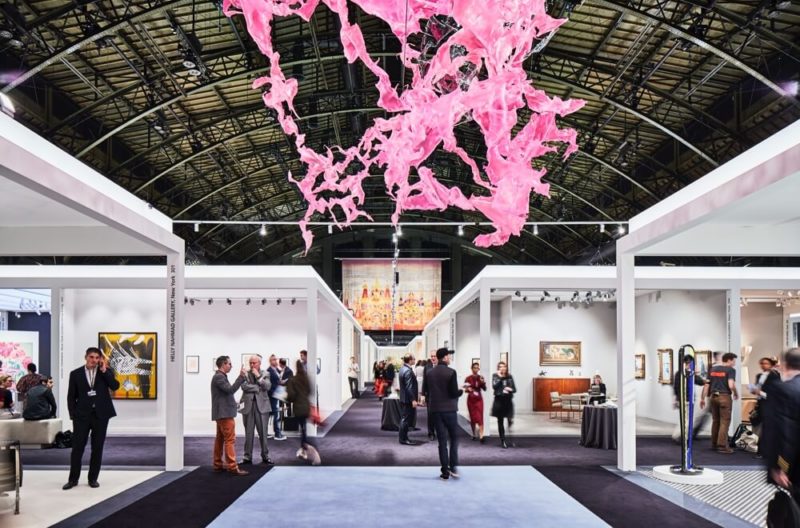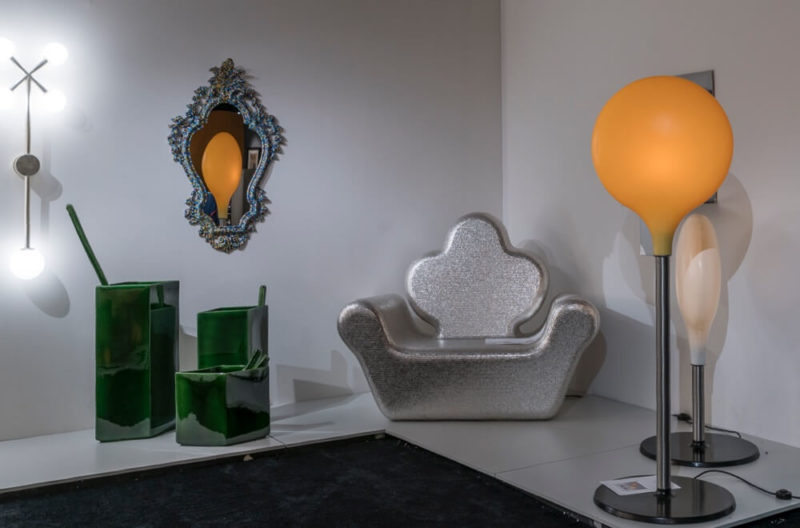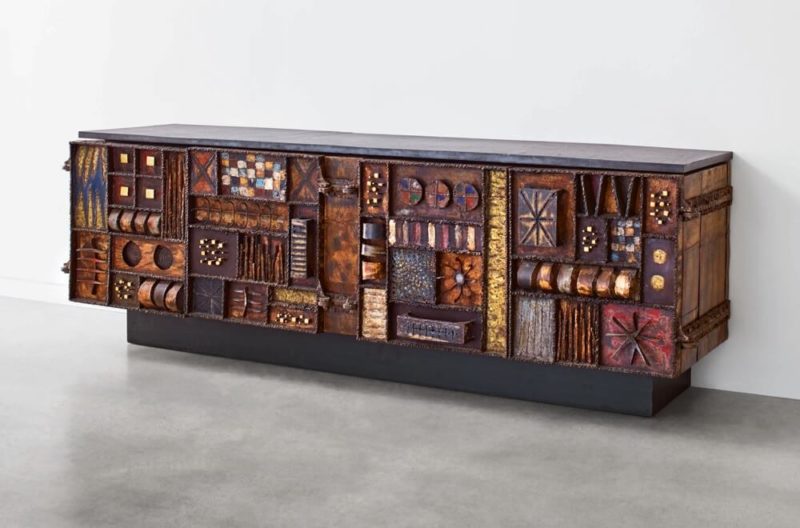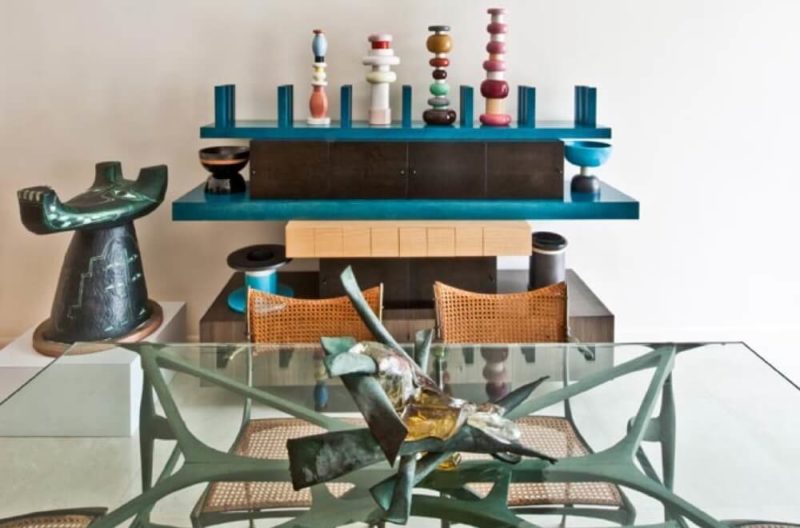Sanford Smith / founder of niche art and design fairs
Judith Gura discovers how his instinct for design and innovative marketing was honed.
SANFORD SMITH LAUGHS at the brass sign on his desk proclaiming him: “The Man, The Myth, The Legend,” but he clearly enjoys the designation. And not without reason. Sandy, as he’s known to everyone in the industry, produces and manages The Salon Art + Design, widely acknowledged as the leading international venue of its kind, drawing thousands of visitors to the New York City’s Park Avenue Armory every November since it began seven years ago.

Sanford Smith
That kind of success didn’t come overnight. Now in his 80th year, Smith has spent more than half his life identifying undiscovered market categories, and creating design shows and art fairs to serve them. And the affable entrepreneur has no plans to retire; “I’ve outlived them all,” he says of erstwhile competitors, but admits to taking it a bit easier, “I have three shows now … at one time I was running eleven!”
Smith followed a circuitous path to show management. Born and raised in New York City, he majored in economics at the Wharton School, received a Master’s degree in Communications from the University of North Carolina, and then joined the family funeral business. On weekend visits to his in-laws in rural Connecticut, he and his wife would go to auctions, where he bought old furniture and decorative objects. “I could fill up a station wagon with stuff for $25,” he reminisces. When his acquisitions had taken over the garage, he rented space at a weekend flea market in a Manhattan parking lot, and made $50 in his first day. Finding that preferable to the $150 he was earning for a five-day workweek, he became a dealer and participated in various indoor shows around New York for five years – before deciding he could do better by organising a show of his own.
In September 1979 Sanford L. Smith & Associates launched the Fall Antiques Show, the first event anywhere devoted exclusively to American antiques. Its debut at the Seventh Regiment Armory (now the Park Avenue Armory) drew long lines of visitors, and inspired a New Yorker magazine cover showing people waiting to get into the show. It moved to Pier 92 on Manhattan’s West Side and became a regular event on collectors’ calendars, ending in 1999, when the market category had changed.
While the Fall Antiques Show was still going strong, Smith noticed that dealers were showing 20th century material along with antiques, and decided the time was ripe for a show devoted to modern design. In November 1985, 70-odd exhibitors participated in the premier edition of Modernism, subtitled ‘100 years of Style and Design, 1884-1984’. Like the Fall Antiques Show, it was the first of its kind – there was no other all-contemporary event at the time, in the United States or anywhere else. The mix of furniture and objects shown by dealers included Arts & Crafts, Art Deco, and Aesthetic Movement pieces as well as Wiener Werkstätte, Bauhaus and mid-century design. Each year, the subtitled dates were moved forward, and the mix moved to more contemporary offerings.
Modernism ended after 25 years, in 2010, and was succeeded in 2011 by the Pavilion of Art & Design (in partnership with French founders, Stéphane Custot and Patrick Perrin), and in 2012 by The Salon Art + Design, which Smith describes as an outgrowth of Modernism, with broader parameters. The objective was to have a top-level fair featuring the very best of design, from the earliest time to the contemporary era. “There are no restrictions, in category or age,” he explains. He hired Jill Bokor, a former design-magazine publisher as the Salon’s Executive Director, responsible for enlisting exhibitors and curating the show. The Salon generally accommodates about 55 invited dealers, with all offerings vetted by a jury of experts. Although art is included, it is predominantly a design show, and has increasingly skewed towards limited-edition, collectible furniture and objects, shown by a roster of blue-chip galleries from around the world. Smith expects the 2019 edition (November 14-18th), to be better than ever judging by the number of dealers signing up early this year.
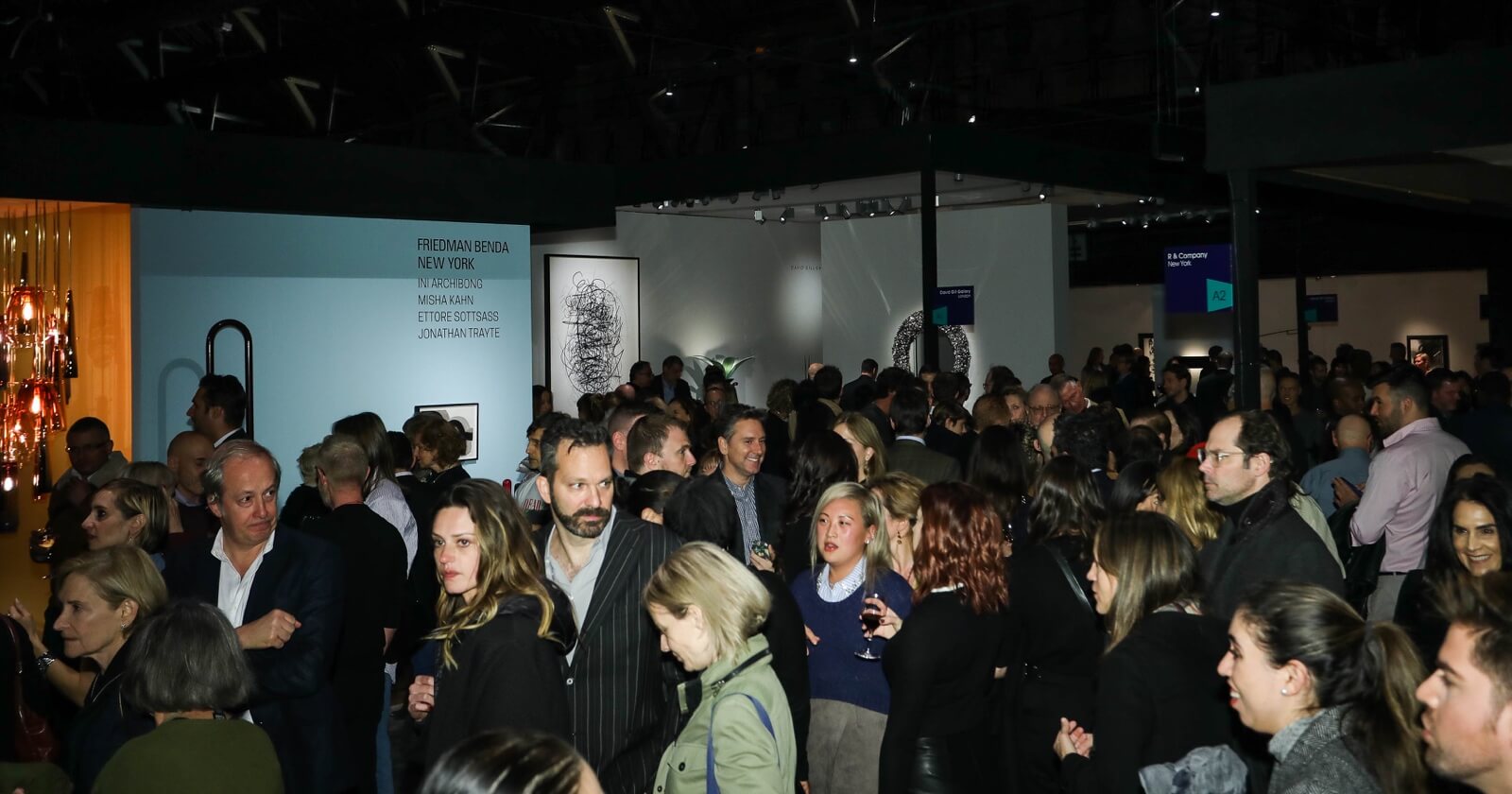
VIPs attending the opening preview of New York’s 2018 Salon Art + Design
COURTESY: Brandon C Tobin/BFA.com
DURING HIS FOUR decades in the business, Smith has organised and managed a variety of other fairs, including Works on Paper, The National Black Fine Art Show, The original AIPAD Photography Fair, The Outsider Art Fair (sold in 2012 and still running), and several antique and art shows. His current roster includes The New York Antiquarian Book Fair (begun in 1979), and the Art Dealers Association of America Art Show (begun in 1985). Of his success in a challenging field, Smith explains, “My one claim to fame is that I saw openings and created shows that hadn’t been done before.” His instincts have met with considerable success. “Every show I’ve ever done has been profitable … even the very first year.” His ammunition includes a good mailing list (“we have the best in the business”), a loyal team (“they do most of the work”), skilled marketing and public relations (“I pay a lot – but it’s worth it”) and a good relationship with the Part Avenue Armory that has ensured a prime location for its shows, in a city with few venues for such events.
In addition to managing shows, Smith has also patronised them: “I collect a bit of everything,” he says, starting with the shelves of shooting-gallery decoys that line the walls of his Chelsea townhouse office. “I try to buy at least one thing at every one of my shows. I’m getting money from the exhibitors, so I want to give back to at least one of them.” Among his modern favourites are the enormous U-shaped Paul Evans desk he sits at, and an Ettore Sottsass ‘Carlton’ bookcase at home.
There are, Smith says, too many art fairs, but he thinks the market can handle more design events. “I can see similar rivals down the road – if they do it right!” He sees a rosy future for high-end contemporary design. “The younger generation owns antiques only if they inherit them, but the contemporary market is booming. With new materials and new ways of doing things, artists can create things that couldn’t be made before. But success isn’t guaranteed, he cautions, “The key to getting new design accepted is the way it’s marketed.” And Sandy Smith intends to keep doing it the right way.
Please see The Design Edit’s report of The Salon Art + Design.




